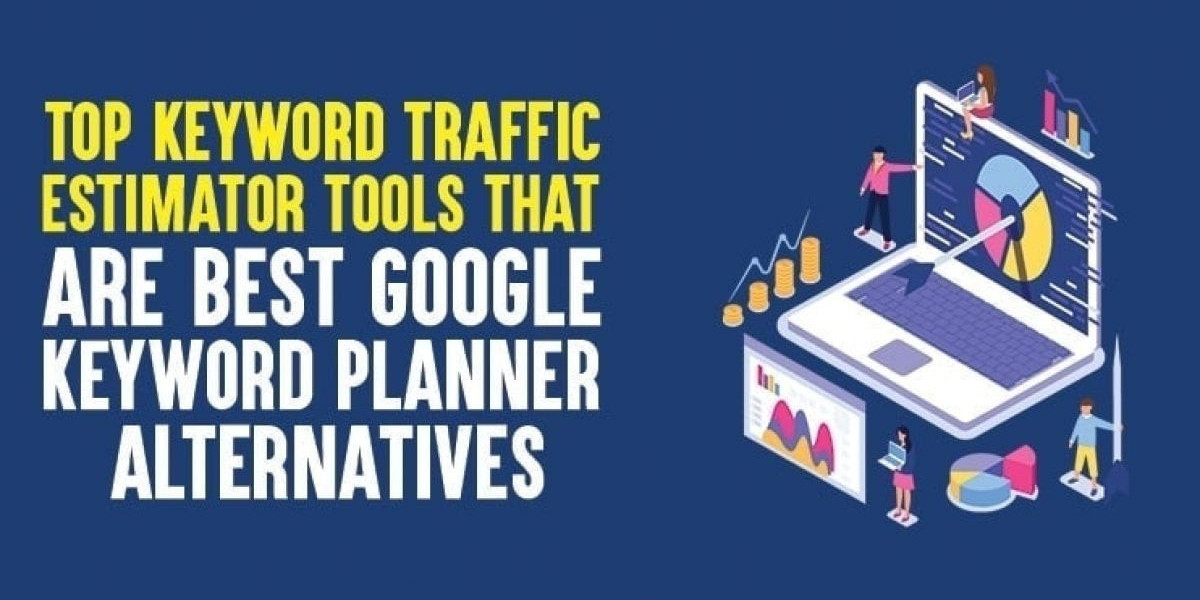In the fast-paced world of digital marketing, understanding how much traffic a keyword can bring to your website is the foundation of any successful SEO strategy. Yet, for many website owners and marketers, the term “keyword traffic estimate” feels like a guessing game — an unclear metric floating somewhere between hope and analytics.
But here’s the truth: with the right tools, insights, and techniques, estimating keyword traffic isn’t guesswork at all. It’s a measurable, data-driven process that can help you forecast performance, shape your content strategy, and stay ahead of your competition.
In this article, we’ll explore what a keyword traffic estimate really means, how to calculate it accurately, and how to use it to boost your visibility and conversions.
What Is a Keyword Traffic Estimate?
A keyword traffic estimate is the projected number of visitors a keyword can bring to your website based on search volume, ranking position, and click-through rate (CTR).
In simpler terms, it tells you how much potential traffic a keyword holds. For instance, if a keyword like “best coffee beans” has 10,000 monthly searches and your page ranks third in Google, you can estimate receiving about 10–15% of those clicks — roughly 1,000–1,500 visits per month.
This estimate is crucial for:
Prioritizing high-value keywords.
Forecasting organic growth.
Allocating content and advertising budgets efficiently.
Setting realistic expectations for SEO campaigns.
Why Keyword Traffic Estimates Matter for SEO Success
Knowing how much traffic a keyword can generate helps you make smarter decisions. Here’s why it matters:
1. Smarter Keyword Targeting
Instead of chasing every trending keyword, you can focus on those with the best balance between search volume, competition, and conversion potential.
2. Better ROI on Content Creation
Each blog post or landing page is an investment. A reliable traffic estimate tells you whether that investment will pay off in terms of visibility and leads.
3. Data-Driven Campaign Forecasting
When you understand potential traffic, you can predict campaign outcomes more accurately and align them with marketing goals.
4. Competitive Benchmarking
Traffic estimates allow you to gauge your standing against competitors — identifying gaps where you can outperform them.
How to Estimate Keyword Traffic Accurately
Estimating keyword traffic involves a mix of tools, data interpretation, and real-world testing. Let’s break it down step-by-step.
Step 1: Start with Search Volume
Search volume represents how many times a keyword is searched per month.
You can find this data using tools like:
Google Keyword Planner
Ahrefs
SEMrush
Moz Keyword Explorer
Ubersuggest
For example, if “keyword traffic estimate” has 2,000 monthly searches, that’s your baseline number. But remember — not all those searches will lead to clicks or visits on your site.
Step 2: Factor in Ranking Position and CTR
The higher your page ranks in search results, the greater your click share. On average:
Rank #1 gets about 30–35% of clicks.
Rank #2 gets around 15–20%.
Rank #3 gets 10–12%.
Positions 4–10 together share the rest.
So, if you’re ranking third for a keyword with 2,000 searches, your estimated traffic is roughly:
2,000 × 0.12 = 240 visits per month.
Step 3: Adjust for Search Intent
Search intent — what the user really wants — affects how much traffic you’ll actually receive.
For instance:
Informational keywords (e.g., “how to estimate keyword traffic”) may bring more readers but fewer conversions.
Transactional keywords (e.g., “buy keyword traffic tool”) may bring fewer clicks but higher conversions.
Matching your content to the right intent ensures you attract visitors who are genuinely interested in your offer.
Step 4: Consider Seasonality and Trends
Keyword popularity can fluctuate. Tools like Google Trends reveal whether a term’s interest is rising, stable, or declining.
For example, searches for “Black Friday deals” spike annually in November — planning content accordingly maximizes visibility.
Step 5: Validate with Real Data
After publishing, monitor your actual traffic through Google Search Console and Google Analytics. Compare real clicks to your initial estimates. Over time, this helps refine your forecasting accuracy.
Top Tools for Keyword Traffic Estimation
Here are some reliable tools that simplify and enhance your keyword traffic analysis:
1. Google Keyword Planner
Free and straightforward, it provides search volume, competition, and CPC data — great for beginners.
2. Ahrefs
Offers accurate keyword traffic estimates, keyword difficulty scores, and competitor insights. Ideal for professionals aiming for deep SEO analysis.
3. SEMrush
Excellent for tracking keyword trends, SERP features, and traffic potential by domain.
4. Moz Keyword Explorer
Gives keyword volume, difficulty, and organic CTR metrics, helping prioritize the most valuable terms.
5. Ubersuggest
A user-friendly tool that blends keyword suggestions, volume estimates, and SEO difficulty in one dashboard.
Common Mistakes to Avoid When Estimating Keyword Traffic
Even experienced marketers can miscalculate keyword traffic potential. Here are some pitfalls to watch out for:
Relying solely on search volume. Not every high-volume keyword drives meaningful traffic.
Ignoring competition levels. A keyword with massive volume but high competition may not be worth pursuing.
Overlooking long-tail keywords. These lower-volume phrases often have higher intent and conversion rates.
Neglecting real-world testing. Always verify estimates with live data over time.
Using Keyword Traffic Estimates to Shape Your Strategy
Once you’ve gathered your keyword traffic data, it’s time to turn insights into action.
Build content around keywords with realistic potential. Don’t aim for impossible rankings; start with achievable wins.
Optimize existing pages to capture more traffic for underperforming keywords.
Experiment with variations — synonyms, questions, and long-tail forms — to expand reach.
Combine traffic data with conversion metrics to focus on keywords that drive actual business results, not just visitors.
The Future of Keyword Traffic Estimation
As search engines evolve with AI and semantic understanding, keyword traffic estimation is becoming more sophisticated.
Predictive analytics, natural language processing, and zero-click searches are reshaping how we measure keyword value.
Marketers who adapt — focusing not just on search volume but search behavior and intent — will have the edge.
Conclusion: Turning Data into Direction
A keyword traffic estimate is more than a number — it’s a roadmap. It helps you understand where your potential lies, how to prioritize your content, and what kind of results you can expect from your SEO efforts.
The most successful marketers are those who combine analytical precision with creative insight — using keyword data not as a limitation, but as inspiration.
So, the next time you plan your content calendar, don’t just guess what might work. Estimate. Analyze. Test. Because in the world of SEO, data isn’t just power — it’s the key to predictable, sustainable growth.








